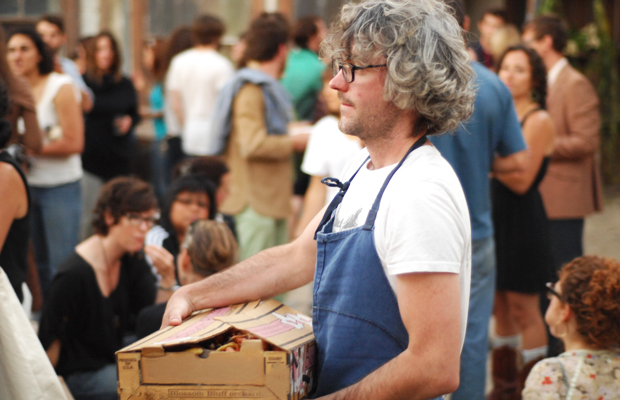
What does it mean to eat locally? Morgan Maki explains
The chef behind 18 Reasons - the community space that shares food knowledge - talks to Bonnie Tsui about classes on butchery and food history
In the Mission District of San Francisco, 18 Reasons is a community space that serves as a gathering place for hands-on educational evenings as a way to make food knowledge more accessible to the public: producer dinners, beer-making classes, seminars on the cultural history of food, art openings featuring photography by Bay Area farmers.
The nonprofit arm of celebrated neighborhood businesses Bi-Rite Market and Bi-Rite Creamery, 18 Reasons is set to open a newly designed and expanded space this spring. The butcher at Bi-Rite Market, Morgan Maki, serves as the chef for 18 Reasons’ producer dinners; he also teaches classes on butchery and food history. As Maki prepared a steaming pot of lemon sformato for a citrus-focused beer-pairing dinner recently, Bonnie Tsui spoke with the chef on what it means to be local at 18 Reasons.
Q: What role does Bi-Rite and 18 Reasons play in educating the community about the impact of purchasing decisions on the local economy?
Some of the best events we do are educational. One of the biggest goals is to close the gap between the producer of food and the consumer of food; as a preparer of food, you’re that middleman. If a customer understands why a product costs what it does and the process and ideology behind it, and learns about it from the producer himself, that’s always going to have a lasting impact - more so than a sign on a deli case, or a grocery store e-mail.
Q: What are your favourite events to do?
The dinners are fun and creative and I get to cook, but I really like the classes and demonstrations. People learn to do things for themselves. For example, I did a recent class on chicken butchery demystified - a lot of professional cooks take these little mechanics for granted. When we share this knowledge with the home cook, it makes people more confident and excited about cooking. And it’s also about teaching people that they can still hit a low price point while shopping responsibly and not compromise on the quality of the product, if they know what to do with all different cuts of meat.
Q: Can you talk a bit about the back story behind this dinner you’re preparing now?
I met the guys who run Pacific Brewing Laboratories when they came to do a beer-making class here a couple of months ago; they’re a young company based here in San Francisco. They brewed all the beers especially for this dinner. We tend to have ingredient-driven dinners, and we thought citrus would be a good fit, since it goes well with beer. So they made a lemon IPA [which Maki paired with a cauliflower and lemon sformato, made with brown butter, trumpet mushrooms, and poached squid], an orange hibiscus saison [paired with citrus and cold smoked mackerel, served with shaved radish, fennel, and chervil], a grapefruit hibiscus saison [paired with duck and pork crepinettes on a bed of candied citrus, mint, escarole, crispy onions, and fresh grapefruit], and a blood orange hefeweizen [poured over Bi-Rite Creamery ice cream to make a beer float]. It was a lot of fun to create this menu with them.
Q: Why the focus on food history now?
I’m very interested in the preservation of culture and the culture of preservation - learning about the history of food helps us make better decisions now. The last food history class we did was on charcuterie. We have to remember that all of these things - these techniques, these foods - were born out of necessity. The increase in technology gives us a lot of tools, but a lot gets lost in the way of stories. I like to go back and explore some of those things that get lost along the way.
Morgan Maki, thank you.